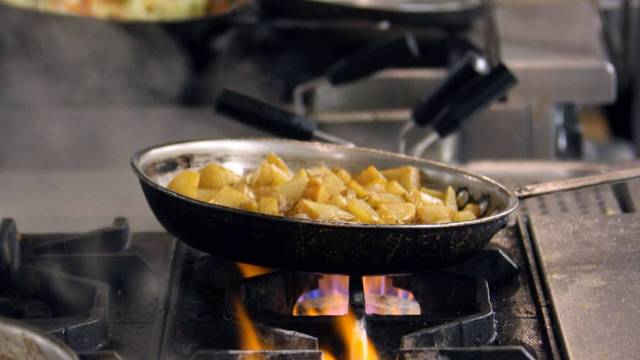Best Asian Restaurant Islamabad: Experience Tastes from Throughout Asia
Best Asian Restaurant Islamabad: Experience Tastes from Throughout Asia
Blog Article
Savor Genuine Asian Food With a Pan-Asian Spin for a Culinary Experience
Embarking on a culinary trip via authentic Eastern food, boosted with a Pan-Asian twist, uses an unique possibility to explore the abundant tapestry of flavors that define the region's diverse cooking customs. This experience welcomes you to savor the exquisite equilibrium of preferences-- pleasant, salted, spicy, and sour-- balanced by fragrant natural herbs and spices. Picture the cutting-edge combination of Thai curry and ramen or the unforeseen pleasure of sushi burritos. As you ponder these enticing meals, think about the cultural stories and historic impacts that shape them, each bite offering a story waiting to be found.

Checking Out Pan-Asian Flavors
In the realm of worldwide gastronomy, Pan-Asian cuisine stands apart for its remarkable diversity and the harmonious interaction of flavors from various Asian societies. This culinary approach celebrates the one-of-a-kind ingredients and rich customs found across the continent, creating a tapestry of preferences that is both satisfying and fascinating. Key to Pan-Asian food is its capacity to stabilize different tastes-- wonderful, salty, spicy, and sour-- while highlighting the quality and high quality of each active ingredient.
From the umami-rich soy sauce of Japan to the fiery chili peppers of Thailand, Pan-Asian food supplies a comprehensive combination of flavors. These elements are typically incorporated in creative ways, enhancing meals with layers of intricacy. As an example, using great smelling natural herbs such as lemongrass and cilantro, usual in Vietnamese and Thai cuisine, includes a rejuvenating brightness to meals, while the consolidation of coconut milk supplies a velvety, rich structure.
The emphasis on fresh fruit and vegetables and aromatic spices makes certain that each meal is not just a feast for the palate yet additionally for the detects. Pan-Asian food welcomes restaurants to start a cooking journey, exploring the large and varied landscapes of Oriental gastronomy with every bite.
Fusion Recipes to Attempt
While Pan-Asian food is commemorated for its typical flavors, the contemporary cooking landscape is increasingly welcoming blend dishes that mix these classic components with influences from other areas. This ingenious approach not just honors the rich heritage of Oriental cookeries however also introduces unique taste experiences that appeal to modern palates.
An archetype of such a combination recipe is the Korean-Mexican taco, where marinaded bulgogi beef is wrapped in a cozy tortilla, covered with kimchi and a spicy gochujang-infused salsa. This mix marries the strong, savory tastes of Korea with the dynamic, fresh elements of Mexican food. Likewise, sushi burritos have gained appeal, integrating the delicate artistry of Japanese sushi with the passionate, hand-held comfort of a burrito, usually including combination active ingredients like tempura shrimp and avocado with a drizzle of wasabi mayo.
An additional notable meal is Thai curry ramen, which infuses the luscious, fragrant spices of Thai curry into the comforting brew of standard Japanese ramen, developing an unified mix that tantalizes the senses. These combination recipes extend beyond plain uniqueness; they represent a culinary discussion in between cultures, encouraging expedition and innovation in the world of Pan-Asian cuisine.
Crucial Components and Seasonings
To truly value Pan-Asian cuisine, one need to comprehend the important ingredients and flavors that form its foundation. This varied cooking design draws from a rich tapestry of Asian traditions, employing an unified blend of tastes and textures.
Aromatic components are pivotal, with garlic, lemongrass, and ginger being ubiquitous across different Pan-Asian recipes. These ingredients give an aromatic base that enhances the complexity of flavors. Flavors such as celebrity anise, cardamom, and cinnamon present heat and character, echoing influences from regions like China and India.

Cooking Strategies and Tips
Mastering the art of Pan-Asian food needs experience with its distinctive food preparation learn this here now strategies, each adding to the vivid tapestry of tastes this cooking tradition is celebrated for. Central to these methods is the stir-fry, a rapid cooking strategy that preserves the dietary integrity and brilliant colors of active ingredients. Utilizing a frying pan, the stir-fry approach permits also heat circulation, important for achieving the particular structure and flavor equilibrium of Pan-Asian dishes.
Another fundamental technique is steaming, specifically widespread in Chinese cuisine. This gentle method preserves the all-natural tastes and nutrients of ingredients, making it optimal for seafood and veggies. Dumplings, a cherished staple, commonly gain from steaming, causing soft, delicious appearances.
Grilling, also integral, presents great smoky depths to recipes such as Oriental bulgogi or Japanese yakitori (pan asian restaurant Islamabad). This strategy typically involves marinating active ingredients, enabling tastes to pass through deeply prior to cooking over an open flame or warmer
Last but not least, grasping the art of balancing flavors-- pleasant, sour, salty, bitter, and umami-- is vital. Effectively layering these components can raise a recipe from common to amazing, using a facility and pleasing culinary experience that personifies the essence of Pan-Asian cuisine.
Eating Experiences Worldwide
Throughout the globe, Pan-Asian food offers an unmatched eating experience, celebrated for its rich tapestry of flavors and dynamic presentations. This culinary sensation has transcended social boundaries, recording the hearts and tastes buds of food fanatics worldwide. In multicultural cities fresh York, London, and Sydney, Pan-Asian dining establishments work as melting pots where culinary practices from Thailand, Japan, China, and beyond assemble, supplying diners with a diverse mix of dishes that highlight the region's diversity.
The worldwide appeal of Pan-Asian food depends on its capacity to provide both authenticity and technology. Chefs skillfully marry typical ingredients such as lemongrass, soy sauce, and miso with modern techniques, causing recipes that are both refreshingly new and acquainted. This blend enables restaurants to embark on a cooking trip that values heritage while welcoming modernity.
Furthermore, eating experiences are raised through attentively designed settings that show the principles of Pan-Asian aesthetics. From minimalist Japanese-inspired interiors to vibrant Thai-themed areas, each restaurant provides a special atmosphere that matches the cooking offerings. Therefore, clients are not merely consuming a dish but partaking in a social experience, making Pan-Asian dining a really global phenomenon.
Conclusion
The expedition of Pan-Asian food uses a profound understanding of the elaborate interplay of flavors and cooking practices throughout Asia. By welcoming combination recipes such as Thai curry ramen and sushi burritos, the cooking trip not only highlights the flexibility of standard ingredients yet likewise showcases innovative modern techniques. This gastronomic journey, enhanced useful content by cooking techniques go and vital flavors, supplies a special possibility to appreciate the cultural diversity and culinary artistry that specify Pan-Asian food on a worldwide range.
Embarking on a culinary journey via genuine Eastern cuisine, enhanced with a Pan-Asian spin, uses an unique chance to explore the abundant tapestry of tastes that define the area's varied cooking traditions.In the realm of global gastronomy, Pan-Asian food stands out for its amazing variety and the harmonious interplay of tastes from different Oriental cultures. Secret to Pan-Asian food is its ability to balance different flavors-- wonderful, salty, spicy, and sour-- while highlighting the quality and top quality of each active ingredient.

Report this page